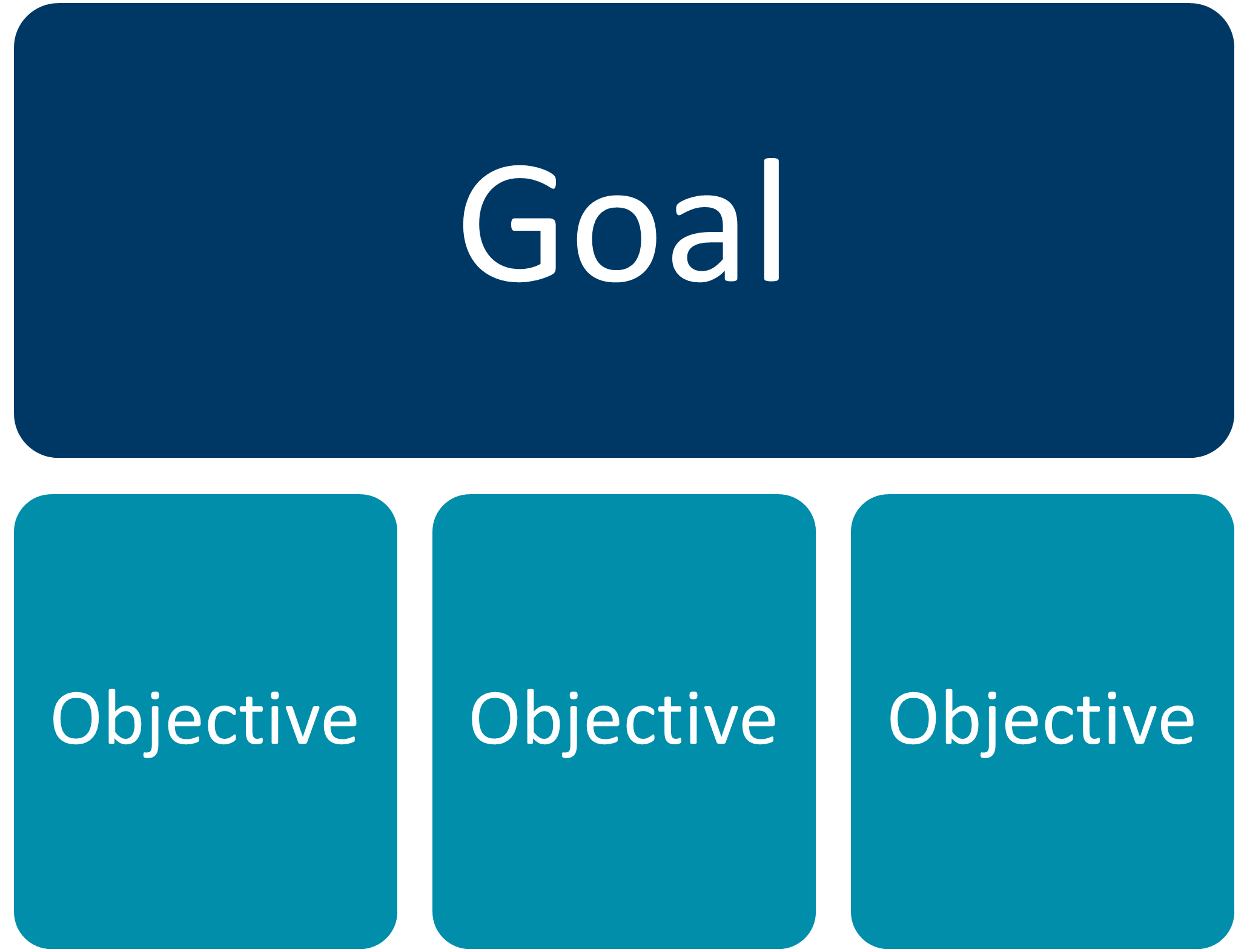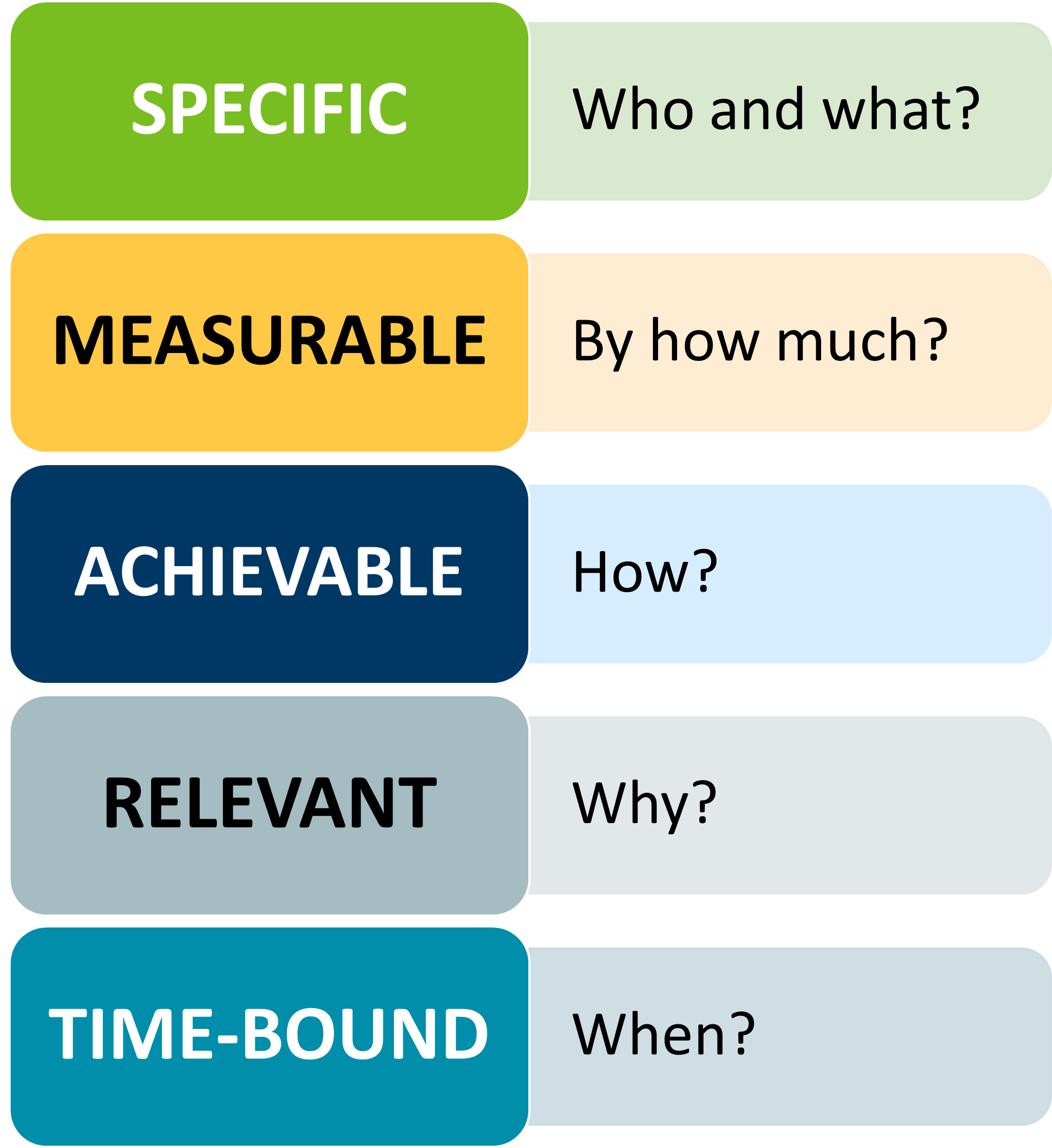

Meaningful goals and SMART objectives invite our colleagues and community members to more fully work together to promote community health and equity. They provide structure and direction to our work, show progress and room for improvement, and communicate impact.
A goal is an aspirational statement about what you want to achieve:
Example: All employees in Tubman County work in environments that support mental well-being.
Many factors drive an organization's goals, like codes and statutes, funders, accreditation, and other plans. However: When setting goals, starting with an organization's needs might not be the right place to start, even though it's often the easiest or most intuitive.
We can't completely disregard forces like funders and and statutes, of course, but they also can't be the only thing that we consider when writing goals. Our commitment to health equity requires us to ask some questions when we're writing goals, especially as part of a community health improvement plan:
Source: Michigan Public Health Institute
A SMART objective is one that is specific, measurable, achievable, relevant, and time-bound. SMART objectives provide the details for how a group or organization will achieve a goal.

In order to understand how the parts of SMART objectives flow together, the order of the SMART components listed below will go out of order—SMTRA. This is because the Specific, Measurable and Time-Bound parts are clearly visible in the standard written format for objectives. The Achievable and Relevant pieces are more abstract and require reflection. Each of these parts will include an example objective that will be re-written to be SMART.
SMART objectives should:
Prompts to consider when writing specific objectives include:
Note that not all of these questions will apply to every objective.
Example: Reduce the percent of Tubman County students in grades 6 through 12 who have smoked cigarettes in the past 30 days.
How will we show impact over time? Use a measure, to show progress toward a target:
Prompts to consider when writing measurable objectives include:
Example: Decrease by 5 percentage points the number of Tubman County students in grades 6 through 12 who have smoked cigarettes in the past 30 days (baseline: 18%; data source: 2019 Minnesota Student Survey).
Time-bound objectives attach a reasonable date by which and objective will happen.
Prompts to consider when writing time-bound objectives include:
Example: By December 31, 2022, decrease by 5 percentage points the number of Tubman County students in grades 6 through 12 who have smoked cigarettes in the past 30 days (baseline: 18%; data source: 2019 Minnesota Student Survey).
Objectives should be within reach for your partners, community, or team, and consider available resources, knowledge, and time. Remember, considering what's achievable for your team or organization often requires thought and discussion.
Prompts to consider when writing achievable objectives include:
A note of caution about setting objectives for long-term, population-level change:
Example intermediate objective with target direction AND number: By December 31, 2022, increase the percent of establishments that pass tobacco compliance checks from 75% to 80% (data source: 2020 Tubman County Sheriff's Department).
Example long-term objective with JUST target direction: By December 31, 2025, decrease the percent of Tubman County students in grades 6-12 who smoked cigarettes in the past 30 days (baseline: 82%, data source: 2019 Minnesota Student Survey).
Relevant objectives align with a corresponding goal and with an organization or group's mission, vision, and values. They're important to partners, community members, and decision-makers, and they help achieve meaningful change for focus populations.
Prompts to consider when writing relevant objectives include:
There are multiple approaches and ways to explain how to write SMART objectives. Here are some other sentence structures for objectives:
[Who] will do [what] resulting in [measure] by [when].
By [when], [who] will do [what] resulting in [measure].
By [when], [measure - includes who and what].
[Measure – includes who and what] by [when].
Writing SMART Objectives (PDF)
Centers for Disease Control and Prevention
Developing and Using SMART Objectives
Public Health Quality Improvement Exchange (PHQIX)